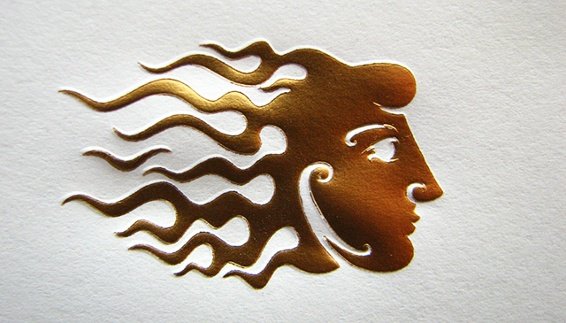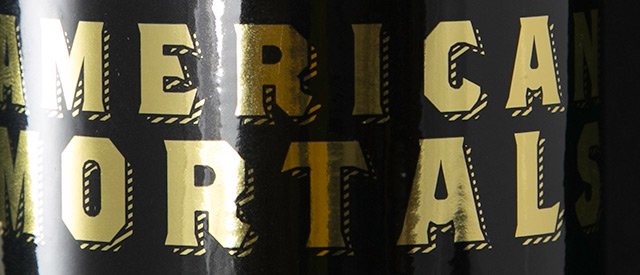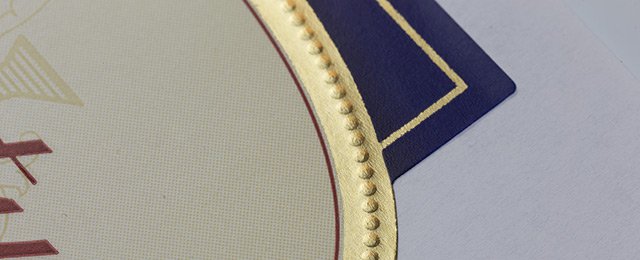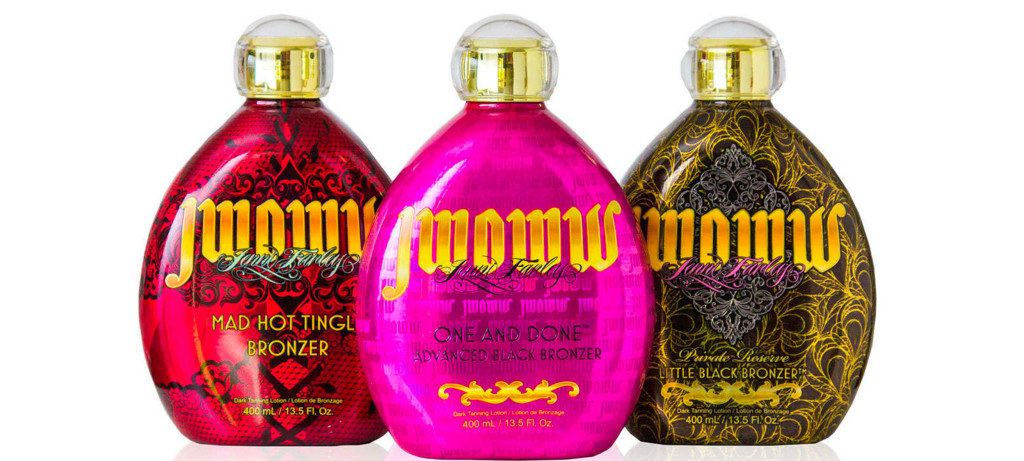Cold foil vs. hot foil for labels

Adding foil is an effective way to enhance the quality of your labeled products. Depending on your needs, we may use cold foil, or hot foil, and at times no foil at all– when a metallized substrate will work best.
You certainly don’t need to become a foil expert, we will always engineer and print your labels with the best solutions for your project. But curious clients often ask about the difference between hot foil and cold foil for labels, so this is just basic information for those interested.
Cold foil vs. hot foil – What’s the difference?
The three main differences between cold foil and hot foil are the way they are applied, the materials which they can be applied to, and to a lesser degree the overall appearance of the applied foils.
Cold foil must be applied to completely smooth and flat label materials, while hot foil can be applied to rough label stocks and textured papers, and even together with an emboss. Cold foil cannot be combined with embossing.
The difference in appearance is relatively minor. Cold foil will lay completely flat against the label surface, while hot foil will have a very slight raised appearance. The subtle dimensionality of hot foil does contribute to a higher-end appearance in some applications. Both cold foil and hot foil for labels are available in a wide array of colors and reflectivity.
How is cold foil applied to labels?
UV-curable adhesive is “printed” onto the label surface in the exact shape of the desired foil design, then foil is immediately pressed onto the adhesive, completely covering it. The excess foil is then stripped away from areas with no adhesive. Finally, the labels run through a ultra-violet light to completely cure the adhesive.

Cold foil will not lay down smoothly on a rough label stock, so this method of applying foil will only be used on labels that are completely smooth. Also the process of stripping away the excess cold foil from the adhesive is not conducive to designs with very fine details.
Cold foil works well as an accent to simple label designs on smooth stock, such as film. This makes cold foil a popular choice for health & beauty and cosmetic labels.
How is hot foil applied to labels?
Hot foil requires the creation of a metal die (also called a stamp or hot stamp die), made in a reverse image of the label design element that will utilize foil. This hot stamp die is mounted above the labels on the printing press and heated. A roll of foil runs between the die and the labels, which the heated die presses down, fixing the foil design to the label’s surface.

Hot foil is ideal for very detailed designs, as the die can maintain fine lines with good edge fidelity. Hot foil can be used on rough label materials, like estate papers, which makes it the ideal choice for wine and spirits labels. The detailed image above shows gold hot foil applied to an emboss.
You certainly don’t need to become a foil expert; we will always engineer and print your labels with the best solutions for your project.
Price difference and turnaround times
Often but not always, cold foil is the cost-efficient solution because producing a metal hot stamp die is pricy. The hot stamp die also takes more time to make, so the production of your labels could take longer.
Metallized label material alternative
There are times when neither foil solution is the best fit for a project. Labels printed on metallized material can often achieve the brilliant look a brand owner had envisioned.
For free printed samples of labels with cold foil, hot foil, or metallized materials, please contact Resource Label Group today.
Find the best solution that makes the most sense for your brand.
Tags:


